- Call us: 01444 237070
- Contact Us
- Stores
- Sign In / Register
-
- Back
- Used Cameras
- Used Accessories
- Used Lenses
- Used Video
- Used Film Equipment
- Used Stock Alert
- Used Blank Test
- Sell or Part Exchange
- Used Clearance
- Recently Added Used Equipment
- Park Picks
- All Used Black Friday Deals
- Faulty
- Trade-In
- Blog
- New in
- Call us
- Contact us
- Stores
- Sign in
- Categories
- Tips & Inspiration
- Reviews
- News
- Events
- Features
- Buying Guides
- Competitions
Best Lens for Landscape Photography
While updating our Sony FE 70-200mm f/2.8 GM OSS mark II Lens review it struck me that a 70-200mm is one of my favourite lenses for everything from sports and wildlife to landscapes.
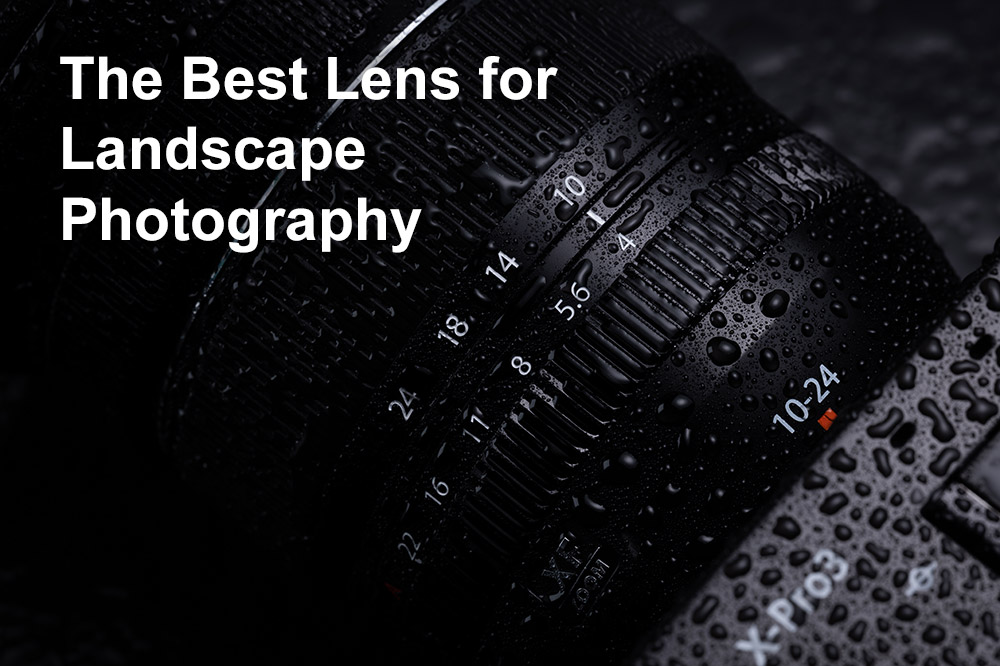
But what about when you’re shooting pure landscapes, either urban or nature, how do you go about choosing the best lens for landscape photography when there are so many options?
For a landscape photographer, a suitable lens is as crucial as the camera itself. While tripods and filters are important, it's the lens that truly shapes the composition of any landscape, playing a pivotal role in capturing both the urban and natural world.
This buying guide caters to photographers of all brands, whether Canon, Nikon, Sony or any other, and is designed to help you make an informed choice, saving both time and money by steering clear of unsuitable options.
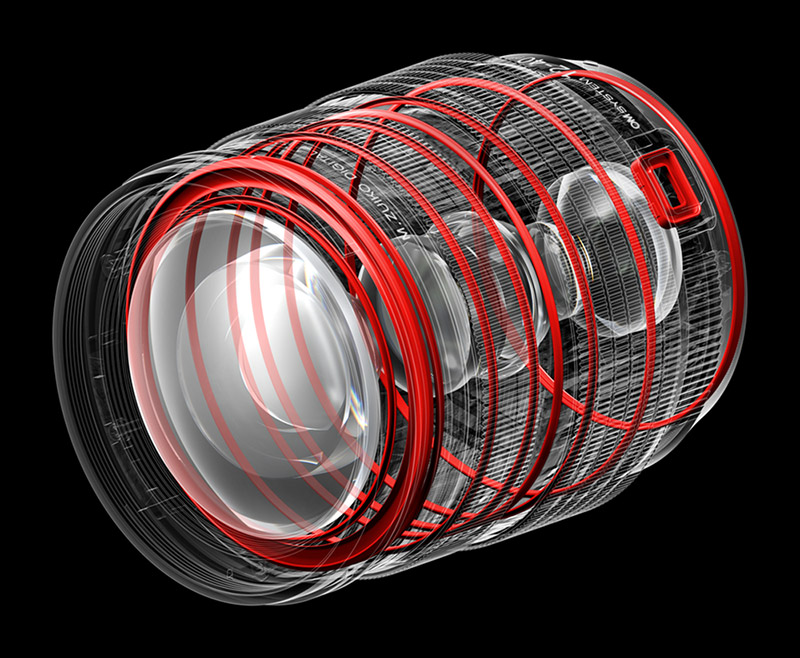
Weather sealing is a great feature and this illustration shows internal seals inside Olympus 12-40mm PRO II lens
Why is a lens important for landscape photography?
It’s important because the right lens depends on factors like focal length, image quality, and specific requirements for the scene you're capturing. A good starting point is to ask yourself what is landscape photography to you? It might be primarily seascapes, cityscapes, mountains or pastoral scenes for example.
Knowing which types of scenery you want to capture will help inform your choice when building a landscape photography lens collection, where the focus should be on versatility.
The appropriate lens will help you frame the best composition, resolve all of the details and should be high enough quality to give the best results. It's a good idea to have a solid grasp of how lenses work from the outset, as using the wrong lens won't give you the results you're after.
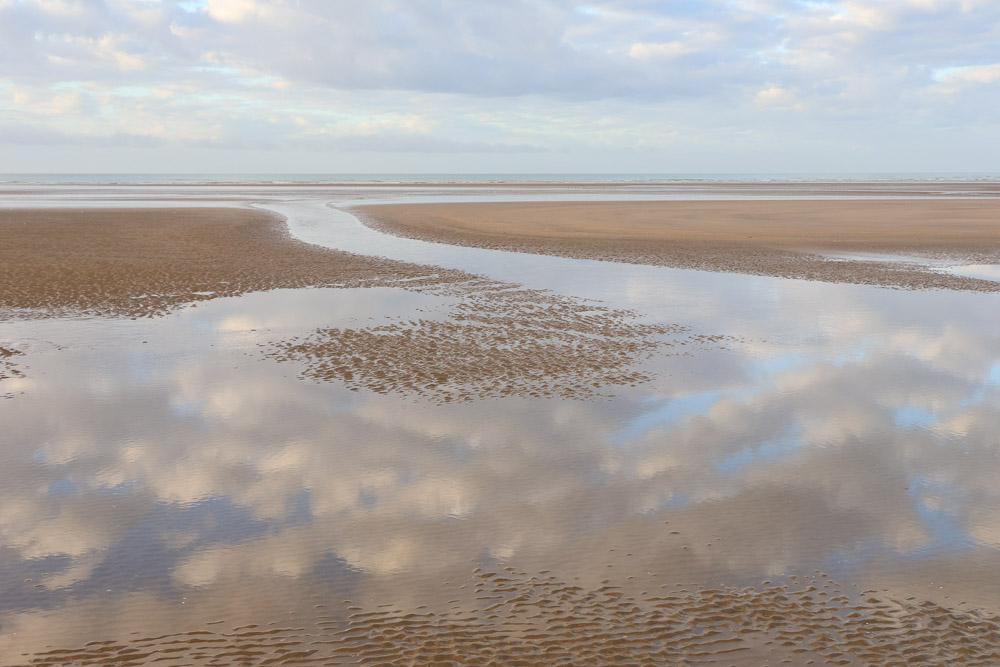
seascape with the EOS R7 and Canon RF 24-240mm f/4-6.3 IS lens at 24mm. Camera settings: Exposure 1/200 sec. f/8. ISO 400
Do you need more than one lens for landscapes?
Your lens, or lenses, should be able to capture any vision that emerges from visiting a location. If you have a singular vision for your landscape photography you’ll probably only need one lens, whereas if you want to capture a variety of different images in varied locations, you’ll probably need a range to choose from.
This approach ensures you have the right options for various scenes, whether wide panoramic views or detailed telephoto close-ups, adapting to the dynamic nature of landscape photography. There’s no single best lens for landscapes and many committed landscape photographers will bring two or three alternatives in order to capture the perfect shot. However, when hiking long distances they may reduce their lens selection in favour of weight savings or single lens versatility.
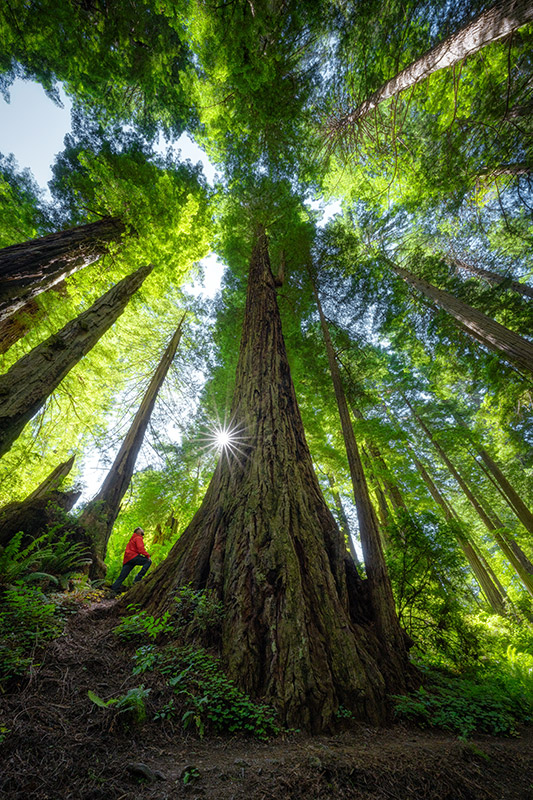
Standing with giants landscape sample photo using Nikon AF-S 14-24mm F/2.8G ED lens
Can you use any lens for landscape photography?
While technically any lens can be used for landscape photography if you can adjust your position to suit the composition, in practice, this is often not feasible. Limiting composition can lead to missed opportunities when the lens isn't versatile enough for the scene at hand.
Another limitation is lens quality, which we explore in depth further below.
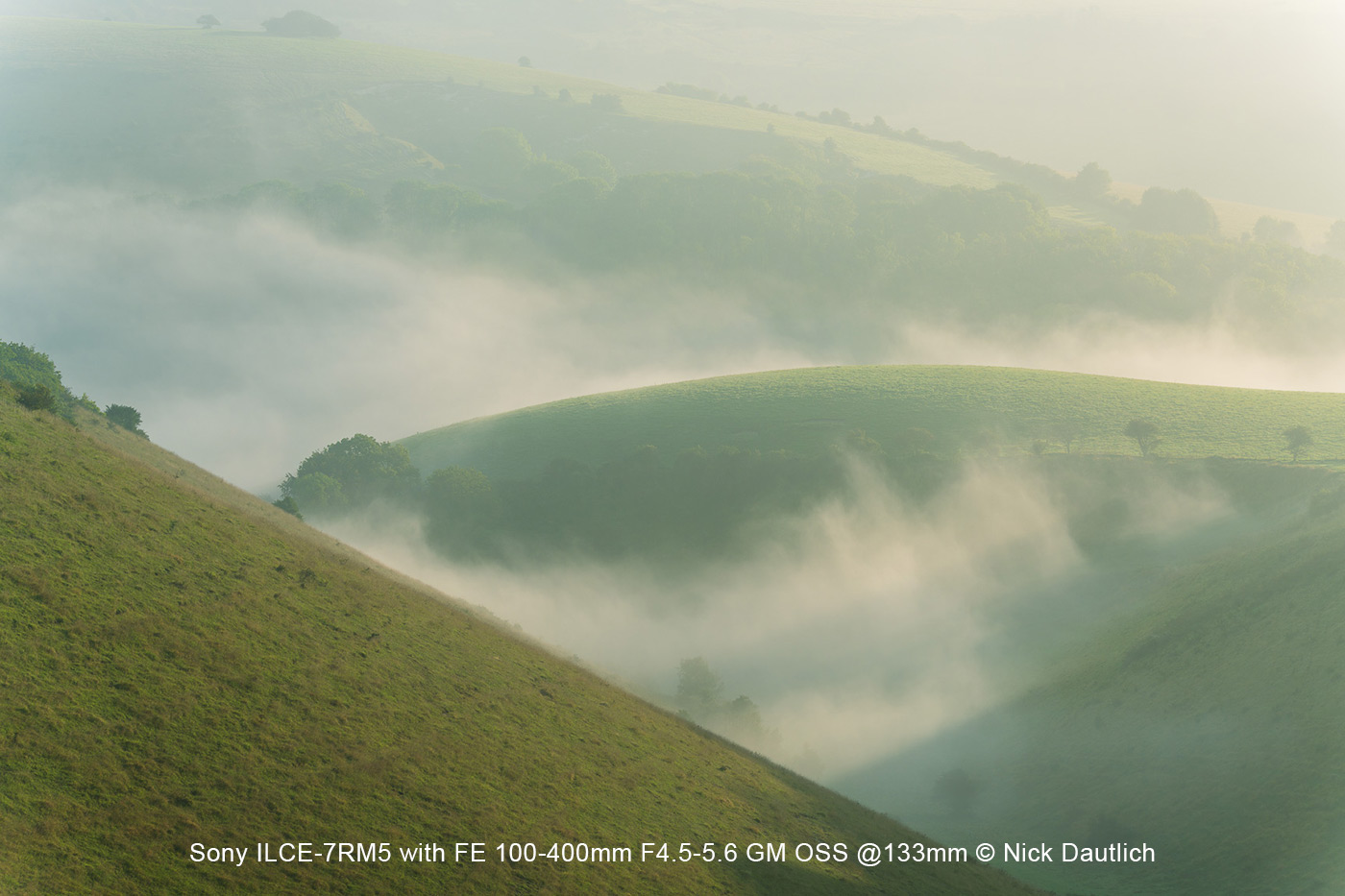
Zoom vs prime lens
Just as with other photographic genres such as street photography or portraits, photographers often wonder whether a zoom vs prime lens (fixed focus length) is best for their needs. While you can capture beautiful landscapes with either, a zoom lens is definitely more versatile, covering several focal lengths in one.
A zoom allows you to adjust the composition without moving your body and all of your equipment, which is often difficult due to restrictions such as being on a cliff edge, in a river, or by a fence. This circles back to the versatility of a lens discussed above, and whether any lens is suitable. Yes, but any lens is not always ideal for every situation.
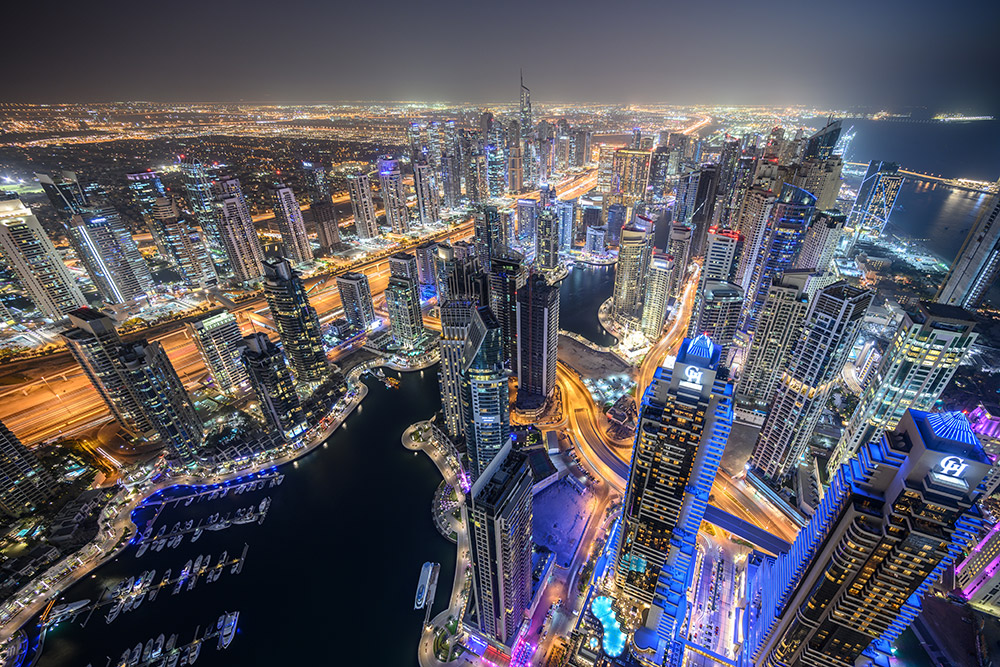
Urban landscape using Nikon Z 14-30mm F/4 S lens @14mm. Camera settings: 5sec. f/4. ISO 100
Choosing the best zoom lens
Made exclusively for the RF system, the Canon RF 24-105mm Lens f/4 L IS USM is hard to beat. It offers a versatile wide-angle to short telephoto zoom range, weather-sealed construction and overall impressive performance.
One of the best affordable landscape zooms for Sony cameras is the FE 12-24mm F/4 G, which is both dust and moisture resistant. You’ll be impressed not only by the image quality, but by just how compact this ultra-wide zoom is when you’re out in the field.
Fujifilm X photographers have the updated Mk II Fujifilm XF 10-24mm lens for wider scenes and the highly capable XF 16-80mm F/4.0, which covers a broad focal range with just two lenses.
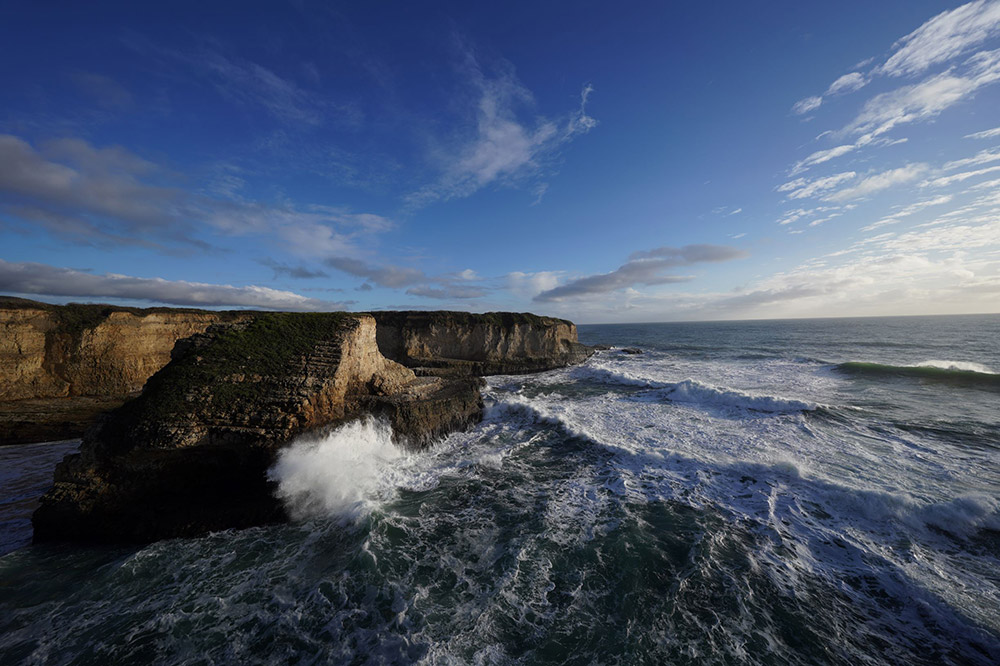
Seascape with Sony FE 12-24mm F/4 G lens
Do you need a professional lens for landscape photography?
Professional lenses incorporate a number of factors, which differentiate them from entry-level or enthusiast lenses. While the best lenses for landscape photography don’t have to be the most expensive, you might consider these features, in order to decide which are most suitable for your specific needs.
A professional lens includes a combination of:
- Optical quality: High-quality lenses have superior glass and coatings, reducing aberrations and flare with sharper, higher resolution results. Professional lens elements include aspherical or low dispersion glass, which improve image quality and are found in premium lenses.
- Aperture: Larger apertures (lower f-numbers) allow more light in, contributing to better low-light performance and depth of field control. This is typically not an issue for landscape photographers, who will often shoot at narrow apertures of around f/8, but may be a consideration if you capture other subjects.
- Build quality: Professional lenses are often more durably constructed, with comprehensive weather-sealing and more robust materials, which is especially useful when shooting in rain, snow and dusty environments.
- Autofocus: Faster and more accurate autofocus systems are typical of higher-end lenses, which is less important for landscapes, where a manual focus lens, or slower focus is more than adequate.
- Image Stabilisation: Advanced optical image stabilisation systems are more common in high-quality lenses, and where many photographers shoot from a tripod, others prefer to capture landscapes handheld, where image stabilisation comes into play.
- Weight: Professional lenses tend to be bigger and heavier, thanks to including more glass and more mechanical features, which is often a distinct disadvantage for photographers who walk to their destinations.
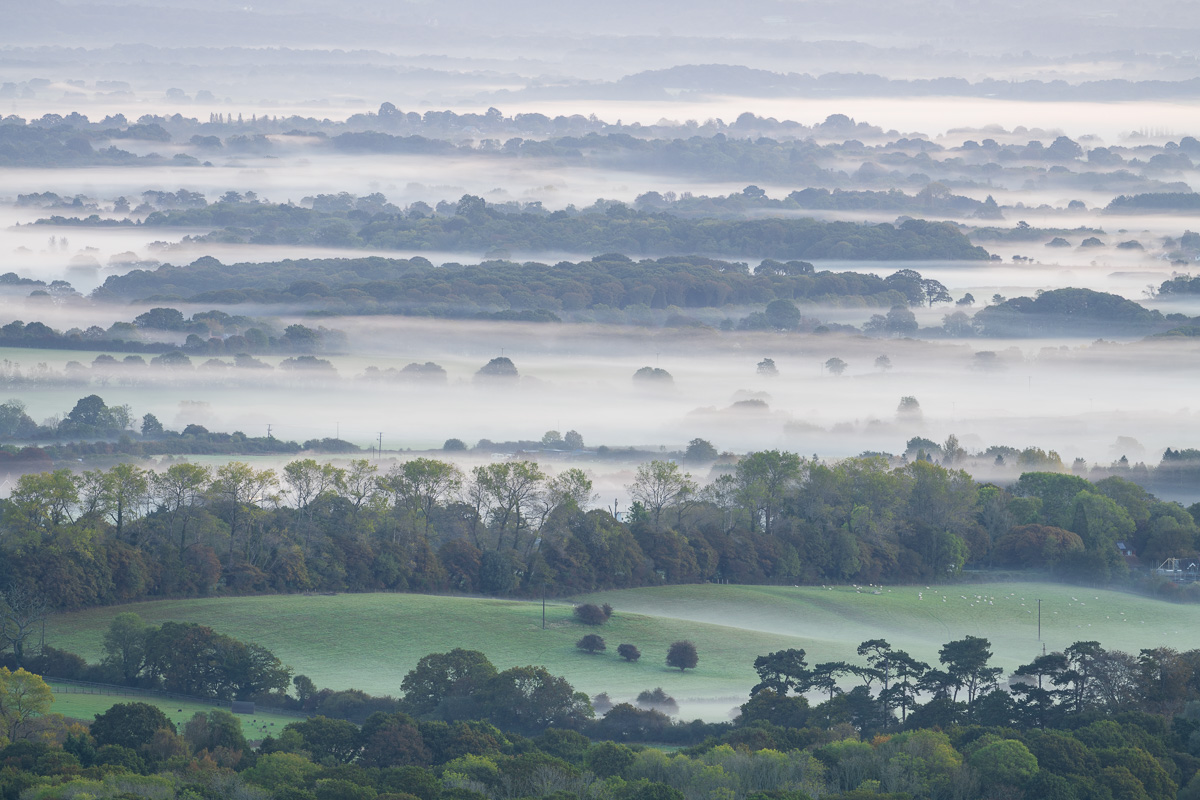
Nikon Z7 II with Nikon Z 100-400mm F/4.5-5.6 VR S @400mm. Camera settings: 1.3 sec. f/8. ISO 64
For landscape photography, the subtle differences between pro and enthusiast lenses can be advantageous. This allows you to choose from a variety of options where features like wide aperture and fast autofocus are not critical.
Each manufacturer has its own naming conventions to distinguish their professional range, providing options to suit different preferences and requirements for any genre.
- Canon lenses are produced as L-series (for Luxury) and non L-series
- Nikon lenses include S-Line premium and non S-line
- Sony lenses are differentiated by GM (G master) and G-series
- Fujifilm has XF premium lenses and XC
- OM system lenses include PRO and non-pro
- Panasonic lenses premium full-frame are named Pro and for micro four thirds are named with Leica
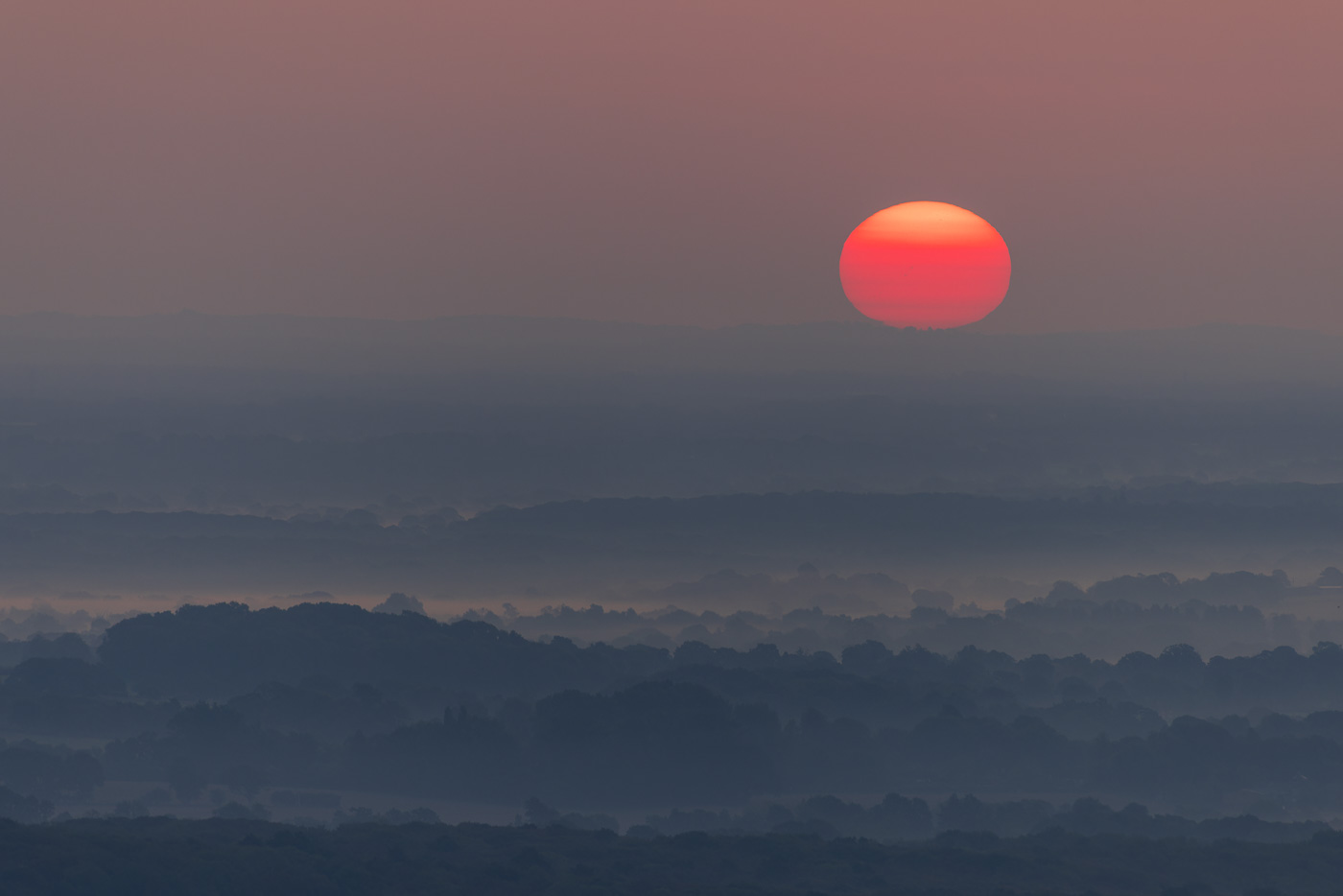
Canon EOS R5 with RF 100-500mm F/4.5-7.1 L IS USM at 500mm. Camera settings: 1/160 sec. f/7.1 ISO 400
Many third party manufacturers such as Sigma, Tamron and others also design premium and standard lenses to suit different needs. The best beginner lenses for landscape photography will almost certainly fall outside of the professional range, enabling you to sell and upgrade a lens, in favour of a professional version when you progress to advanced levels.
What other considerations should you look for?
Aside from focal length, build and image quality, there are other factors such as flare performance when shooting backlit subjects, as well as filter compatibility to consider. Many ultra wide angle zoom lenses are unable to accept lens filters, which are deemed essential to a certain breed of landscape photographer.
For example using ND filters for long exposure photography is impossible without a means of mounting the ND filter. For a deeper understanding, our guide Lee filters explained has a wealth of information about how to use square filter systems, as well as the impact, which lens filters can have on the final image.

What lenses should a landscape photographer have?
Choosing landscape lenses involves covering a wide focal range, ideally from around 12mm to 400mm, in order to capture varied landscapes and cityscapes. As a beginner, narrowing down these options is beneficial, focusing on essential focal ranges to start, rather than acquiring an extensive collection right away.
To identify your first lens for landscape photography, analyse inspiring landscape images on blogs and social media to determine if they were taken with an ultra-wide, standard, or telephoto lens. Attraction to a specific style of landscape photography can help guide you towards the most suitable lens for your preference, and the scenes which you are inspired to capture.
Typically the following zoom lenses will get from ultra near subjects filling the frame, to distant compressed details in the landscape. As mentioned earlier these needn’t be pro f/2.8 zooms, but can be an f/4 or variable aperture f/4-f/.5.6 and so on:
- 12-24mm ultra wide zoom (or the one below) for capturing more of the grand scene
- 16-35mm ultra wide zoom (or similar) for capturing more of the grand scene
- 24-70mm standard zoom (or 24-105mm etc.) for a natural perspective with low distortion, similar to the field of view which the human eye sees
- 70-200mm telephoto zoom (or a 70-300mm etc.) to pick out details from distant scenes as Long lens landscape photography gains popularity with photographers
- 100-400mm super telephoto zoom (or a 100-500mm etc.) as above to an even greater degree
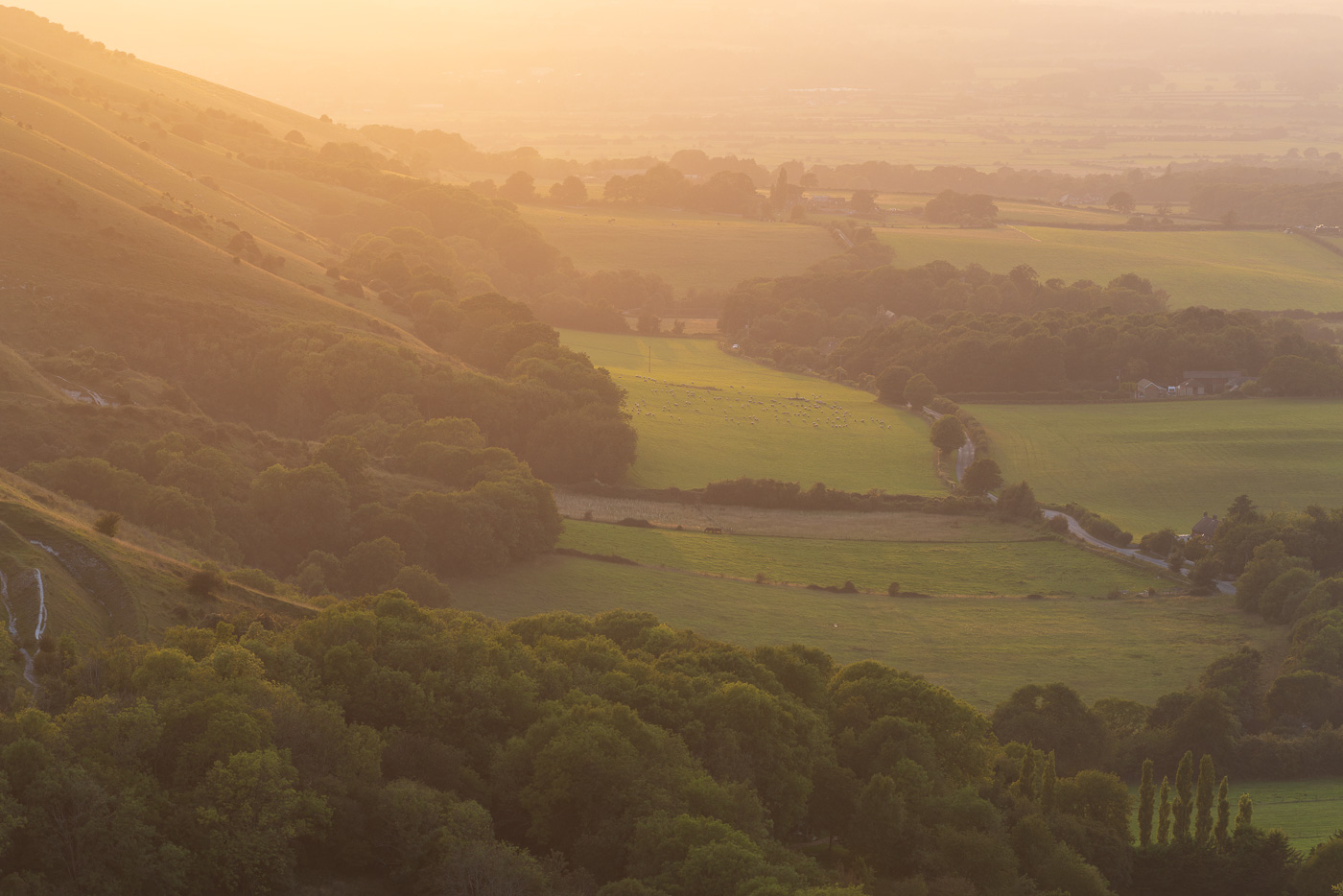
Sunset landscape taken with Canon EOS R5 with RF 100-500mm F/4.5-7.1 L IS USM @159mm. Camera settings: 1/400sec. f/8 ISO 1000
When choosing the best landscape photography lens, remember to take into account camera sensor sizes. A micro four-thirds sensor has a 2x crop factor, and an APS-C sensor has a 1.6x crop factor. This means a 12-24mm lens effectively becomes 24-48mm on micro four-thirds and 18-36mm on APS-C cameras, impacting the actual field of view.
The best Canon lenses for landscape photography
As Canon celebrates five years of mirrorless cameras you’ll find a number of options for landscape photography, including the incredibly versatile Canon RF 100-500mm Lens, which is an amazing all-rounder – as long as you are happy to carry it over distances.
|
Canon |
Option 1 |
Option 2 |
|
Ultra wide zoom |
||
|
Standard zoom |
||
|
Telephoto zoom |
Best Sony lenses for landscape photography
Sony's decade-long experience in full-frame mirrorless cameras has led to an expansive range of lenses for the E-mount. This includes a variety of focal lengths and zoom ranges, and options from third-party brands, offering Sony users a wide array of choices when finding their ideal lens for landscape photography.
|
Sony |
Option 1 |
Option 2 |
|
Ultra wide zoom |
||
|
Standard zoom |
||
|
Telephoto zoom |
Which is a good Nikon lens for landscape photography?
Nikon's advancements with mirrorless cameras like the Z7 II and Z8 have brought them on par with their DSLR counterparts according to most landscape photographers. The brand's mirrorless lens lineup is expanding, with a wide range of options that cover every conceivable focal length, catering to diverse compositional requirements.
|
Nikon |
Option 1 |
Option 2 |
|
Ultra wide zoom |
||
|
Standard zoom |
||
|
Telephoto zoom |
Best Fujifilm lenses for landscape photography
Lightweight Fuji cameras like the X-T5 and X-H2, are ideal for landscape photography, offering low base ISO and higher resolution. The established X system means a wide range of Fuji lenses is available, ensuring landscape photographers can find the perfect lens to suit their specific preferences.
|
Fujifilm |
Option 1 |
Option 2 |
|
Ultra wide zoom |
||
|
Standard zoom |
||
|
Telephoto zoom |
Fujifilm XF 100-400mm F/4.5-5.6 R LM OIS WR Telephoto Zoom Lens |
The best Olympus (OM System) lenses for landscape photography
With a growing lineup of micro four thirds cameras from OM System we’re seeing ground-breaking features for all types of photography, including handheld high-res modes in the OM-1 and OM-5. Add one of a large range of compatible lenses, and you have a lightweight, portable and effective landscape kit.
|
OM System |
Option 1 |
Option 2 |
|
Ultra wide zoom |
Panasonic Leica DG Vario-Elmarit 12-35mm F/2.8 ASPH Power O.I.S. Lens |
|
|
Standard zoom |
||
|
Telephoto zoom |
Panasonic Leica DG Vario-Elmar 35-100mm F/2.8 Power OIS Lens |
Panasonic Leica DG Vario-Elmar 100-400mm F/4-6.3 II ASPH Power OIS Lens |
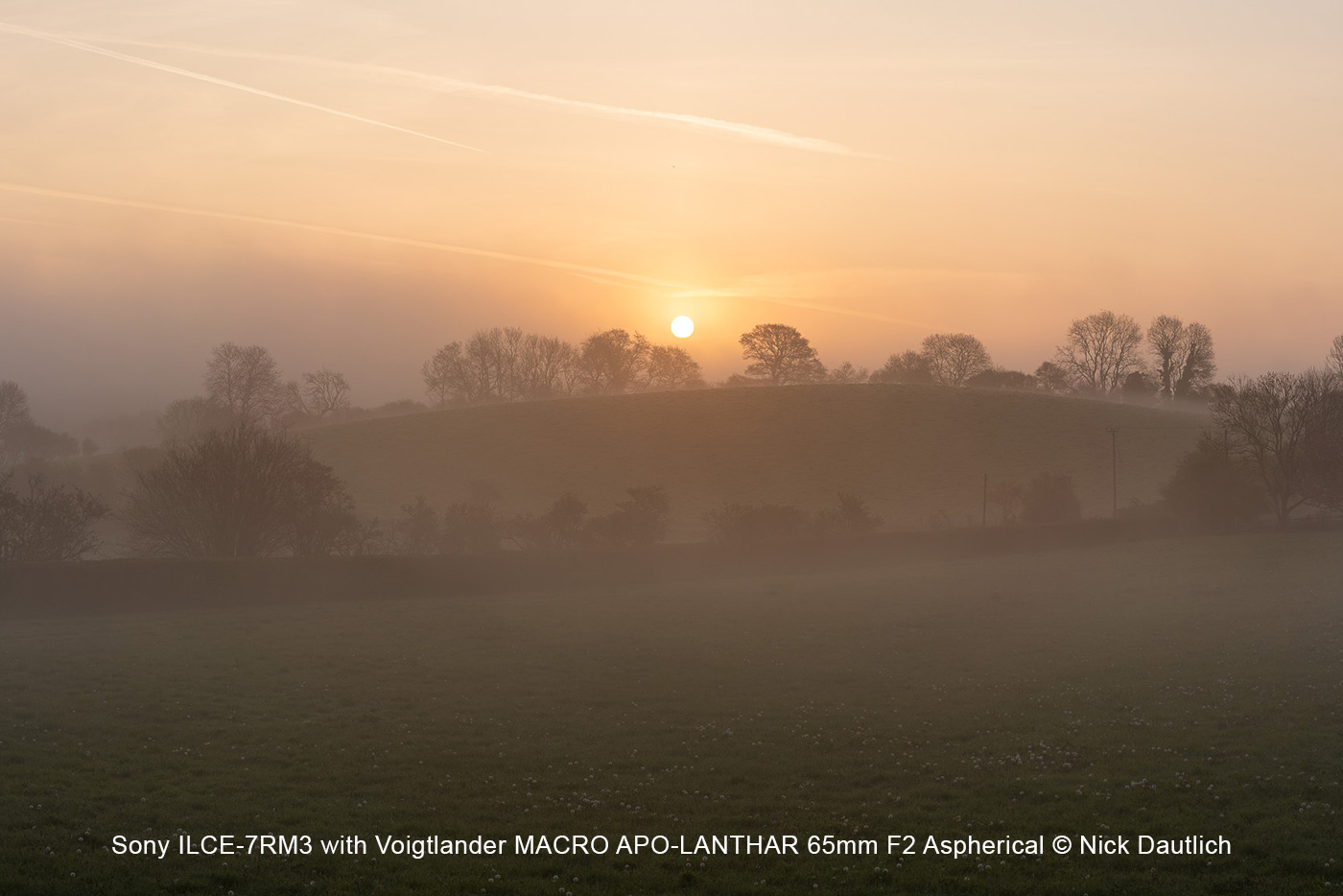
Summary
Choosing the best lens for landscape photography depends on your preferred style of shooting. You may be drawn to sweeping ultra wide angle scenes, standard focal range images, or telephoto details, which are isolated from a distance.
A zoom lens offers greater versatility than a prime, and you should consider weight, compatibility with lens filters and weather sealing if you intend to shoot during inclement weather. All cameras systems have a range of options to suit any budget and you don’t have to have the most expensive lens to get incredible results, especially with manufacturers releasing powerful tools in both cameras and lenses to achieve ever higher image quality.
What really counts is getting out with at least one lens which you love shooting with and practicing, enjoying the elements and exploring the landscape to progress your passion.
Discover our range of cameras lenses today to find the perfect new or used lens to capture your own beautiful landscape photos, and don’t forget to share them with us on social media.
Share this post:
By Nick Dautlich on 03/01/2024
Nick Dautlich
Senior Content Writer and Product Reviewer
Nick Dautlich is the Senior Content Writer and Product Reviewer at Park Cameras, with over 15 years of photography experience. A Sony Imaging Professional and expert reviewer, Nick has worked with major brands such as Canon, Sony and Nikon. His work is also featured on Vanguard World UK’s website, Capture Landscapes, and Shutter Evolve. Nick’s photography includes National Trust projects and magazine covers and he is passionate about landscapes and storytelling. Nick also enjoys hiking and teaching his children about nature. Learn more on his profile page.

Trade in your old equipment
Fast and easy trade in service ensures your old gear is collected efficiently and you are paid quickly! It's very simple to trade in your unwanted photography gear. Just head over to our dedicated Sell or Part Exchange page, fill out the details, and we'll get back to you with an offer for your old gear. Take the cash, or put it towards the cost of your new gear. It's up to you! Find out more
sign up to the newsletter
Keep up to date on the latest photography news, events and offers. Sign up now